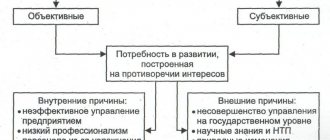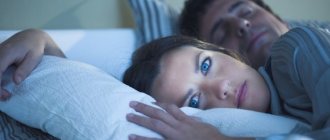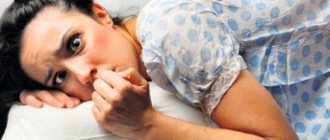Every person is familiar with the feeling of fatigue and lack of energy, especially during periods of bad weather or outbreaks of viral infections. Normally, this problem is solved with proper rest and sleep. But when such a condition drags on and significantly reduces the quality of life, this is a signal that it is time to think about the health of the nervous system.
Fatigue is a functional state of the body with a significant decrease in energy, performance and motivation, which affects both the physical and mental well-being of a person. Typically, persistent fatigue is a symptom and not a separate condition. In most cases, it is caused by a combination of lifestyle, health and social problems.
Constantly feeling tired can cause a variety of physical, mental and emotional symptoms:
- Headache, dizziness
- Decreased immunity, frequent infectious diseases
- Lack of feeling of proper rest after sleep in the morning
- Muscle weakness, body aches
- Tinnitus
- Slow reaction, problems with coordination
- Constant lethargy, inertia, apathy, laziness, lack of motivation
- Deterioration of thinking processes: decreased attention, concentration and intelligence, which means deterioration in educational and work activities
- Loss of appetite
- Problems with short-term and long-term memory
- Exacerbation of allergic reactions
- Enlarged lymph nodes
- Vision problems
Symptoms tend to worsen after exercise.
Clinically significant is a feeling of fatigue with accompanying symptoms for two or more weeks.
Certain symptoms may predominate depending on the type of fatigue. There are two of them:
Physical fatigue: Normally, muscle fatigue gradually accumulates during physical activity and goes away after rest. Pathological cases are associated with lack or insufficient sleep and health problems. It becomes difficult for a person to perform ordinary physical activities that he could easily cope with before. For example, a patient who previously visited the gym regularly and with pleasure completely gives up training due to lack of strength. The problem can also affect completely routine tasks: climbing the stairs to the second floor, walking to the nearest store. A mandatory symptom will be muscle weakness.
Mental fatigue: it is difficult for the patient to maintain not only physical, but also mental activity. Memory, concentration, and learning ability are impaired. Eternal fatigue and drowsiness prevent you from doing even light mental work. This condition affects the driver’s reaction and attention. According to statistics, sleepy people behind the wheel get into car accidents three times more often than others. This is comparable to the risks associated with being intoxicated.
It happens that a person sleeps enough every day, eats normally and leads an orderly lifestyle, but constant weakness and fatigue do not go away. Feeling exhausted can make it impossible to manage even necessary daily activities. This means that the condition requires professional diagnosis and possibly treatment.
Competition “Bio/Mol/Text”-2020/2021
This work was published in the “Free Topic” category of the “Bio/Mol/Text” competition 2020/2021.
The general partner of the competition is the annual biotechnology conference BiotechClub, organized by the international innovative biotechnology company BIOCAD.
The sponsor of the competition is SkyGen: a leading distributor of life science products on the Russian market.
Competition sponsor: the largest supplier of equipment, reagents and consumables for biological research and production.
"Book" sponsor of the competition - "Alpina Non-Fiction"
We often hear that social networks are to blame for everything: “Teenagers do not part with their phones, they sit on them day and night! And then they can’t wake up for school, they fall asleep in class, and because of this they study poorly. Then on weekends they sleep until noon, but the lessons won’t teach themselves. Okay, if they want to go to bed late, then let them read books, because it’s this blue light from the screens that keeps them awake for so long!”
Do you recognize the arguments? But some of them are myths, while the significance of others is exaggerated. In reality, why we sleep and how we do it at different times in our lives is a complex and contradictory story. Let's try to figure out why the sleep of teenagers and young adults is so different from the sleep of middle-aged people and children, why we don't get enough sleep all the time (even if we sleep for what seems like a sufficient amount of time), what role does the first class/first lesson at 8 play in this? :30 in the morning, and what - hanging out on social networks at night, looking at it, and let's talk about whether something can be done about all this.
In pregnant women
In the first weeks of pregnancy, women want to sleep during the day, even if they get enough sleep during the night. A peculiar reaction to hormonal changes in the body occurs. It is difficult to overcome sleepiness if a woman works. I have to do gymnastics during lunch breaks.
Lethargy and weakness in the 2nd trimester of pregnancy is a symptom of anemia, which is quite common. Against the background of late toxicosis, a desire to sleep may appear, even if you have had enough sleep. Swelling of the limbs is added to drowsiness.
Blood pressure rises, and increased protein content is found in the urine. When the desire to sleep during the day does not go away for a long time and is combined with dizziness, headache, nausea, then the help of a doctor is needed.
A perfect storm
The map for us will be the model of a “perfect storm” (a perfect storm, an English phraseological unit denoting an event in which a rare combination of circumstances sharply aggravates the events) (Fig. 1) [1], [2]. This is a model according to which, in adolescence, sleep is influenced by physiological and social factors: on the one hand, shifting it in time, on the other, reducing its duration. This subsequently affects well-being, mood, academic performance and can cause health problems.
Figure 1. The “perfect storm” model.
[2]
Weekend getaway
On the long-awaited weekend, they decide to sleep for the whole week - until lunch. The next work week everything repeats itself. The cycle of “lack of sleep - excess sleep” becomes a loop, and it is very difficult to break out of it. Such a “regime” causes significant damage to health: strong fluctuations in sleep duration are unacceptable!
Traditionally, people do not get enough sleep on weekdays when they are forced to get up early to get to work.
Physiological factors
With the onset of puberty, a biologically determined shift in the sleep-wake cycle occurs, with a tendency toward falling asleep later. This shift is mediated by at least two reasons.
Firstly, there is melatonin. It determines our bedtime, and its synthesis follows the circadian rhythm. As the child grows older, the peak of its secretion shifts to a later time, from approximately 10:00 pm to 1:00 am. In addition, the volume of its synthesis decreases significantly, and in girls these changes occur earlier than in young people, as does the onset of puberty [2], [3].
What circadian (aka circadian) rhythms are can be learned from the article “Biomolecules” about the Nobel Prize in Physiology or Medicine for 2021 [4].
In addition, it is melatonin that synchronizes our internal biological clock with the time of day: its secretion changes depending on the activity of the suprachiasmatic nucleus, which, receiving signals from the retina, responds to changes in ambient light. Sensitivity to evening light levels increases in early adolescence [5]. This leads to suppression of melatonin secretion and, as a consequence, a delay in falling asleep [6].
You can learn more about the work of the suprachiasmatic nucleus from the article “Biomolecules” : “Wake up!” - “Go to sleep...” - “Wake up!” - “Go to sleep...” - “Wake up!” [7].
The second reason is a delay in the phase of the sleep-wake cycle during adolescence. And this is not a disease of modern society and city residents. This phenomenon is noted regardless of the significant cultural differences in the habits of adolescents in different countries around the world [8]. In order to understand it, we first need to become familiar with the two-component model of sleep regulation (Figure 2). It is based on the interaction of two components—the circadian and homeostatic processes of sleep regulation [9], [10]. The circadian process (C-process) is rhythmic, its cycle is approximately 24 hours and is regulated by the level of light at different times of the day, the activity of the suprachiasmatic nucleus and melatonin. The homeostatic process (S-process) is associated with the accumulation of fatigue and drowsiness during wakefulness; it increases during the day and decreases during the night. Its marker is considered to be the delta index (also known as the SWA level, slow-wave activity on the electroencephalogram, EEG). In healthy people, it is maximally expressed during slow-wave sleep (NREM sleep), increases depending on the duration of previous wakefulness, and is extremely high during sleep deprivation.
Figure 2. Two-component model of sleep regulation.
[9], [10]
This “sleep pressure” (homeostatic S-process) accumulates more slowly in adolescence, which is associated, among other things, with a decrease in the peak level of melatonin and leads to a longer time to fall asleep, forcing one to stay awake at night (Fig. 3). At the same time, this “pressure” decreases in adolescents almost as slowly as in children. Thus, given the need to wake up early the next day, the 8–10 hours of sleep required for adolescents turns out to be an almost impossible condition in their usual reality [11]. It is worth noting that the listed processes increase with growing up and puberty, so high school and junior students experience the greatest difficulties with short and poor-quality sleep [12], [13].
Figure 3a. Levels and timing of melatonin secretion in adolescents at different stages of sexual development.
[12]
Figure 3b. “Childhood” and “teenage” patterns of the sleep-wake cycle. The red and blue lines are the upper and lower boundaries of the circadian process (C-process), which indicate the threshold for falling asleep and the threshold for waking up. The green line is the homeostatic process (S-process).
[13]
How exactly these features are programmed at the genetic level is still unknown, but there are studies on fruit flies. For example, the pdm3 gene was discovered, which is necessary for the formation of sleep regulation mechanisms in Drosophila. This gene encodes the protein PDM3, a transcription factor domain that coordinates the early brain development program and controls the communication of wakefulness-promoting dopaminergic neurons with the sleep-promoting region. When the pdm3 gene is knocked out, dopaminergic inhibition of the sleep center increases prematurely, its formation is disrupted, and young flies continue to stay awake when they should fall asleep, thereby not getting the required amount of sleep. There are a number of homologous genes in humans, one of them is POU6F2. In mammals, its products, the POU proteins, are associated with neurodevelopmental disorders such as autism spectrum disorder, which are often accompanied by comorbid sleep disorders, suggesting a potential role for these early life sleep regulators [14]. Thus, we have little evidence that the shift in the sleep-wake cycle is genetically determined and occurs with maturation and brain development.
You can learn about another “sleep gene” discovered in fruit flies from the 2008(!) news on Biomolecule [15].
We cannot influence all this biological machinery, but the second group - social factors, which are associated with most misconceptions and myths - is quite amenable to modification.
Social factors
As we have already figured out, from a physiological point of view, social networks and the cold light of screens associated with them are not the only culprits of late bedtime. Of course, an active social life attracts our attention to countless chats, but it is not entirely clear: this is the reason for going to bed late or a way to fill the time in which, on the one hand, you are no longer productive enough to study, and on the other, not yet so Do you want to sleep to put off all your work? In addition, there is no consensus in the scientific community about which element of sleep hygiene has the greatest impact, and therefore there are no direct recommendations from international sleep medicine and pediatric organizations regarding the use of gadgets before bed [16], [17].
Other social factors that influence teens' sleep include academic workload and peer pressure. For some, it may be the fear of failing an upcoming exam, forcing them to study all night long; for others, it may be difficult relationships with teachers or classmates that are disturbing and do not allow them to sleep. In both cases, a vicious circle is formed: problems at school can lead to anxiety, insomnia and lack of sleep, which, in turn, reduces cognitive function the next day, adds irritability and impulsivity, and therefore new problems appear that interfere with sleep.
Another factor (it can be called sociobiological) is the consumption of caffeine in general and coffee in particular. In the eyes of many teenagers, this is one of the ways to appear older by drinking a kind of “growing up drink.” But for teenagers, the daily caffeine intake is much lower than for adults; it is easy to exceed it, focusing on parents, and as a result - tachycardia, hand tremors and increased anxiety, which in no way contribute to healthy sleep [18].
Above we mainly talked about going to bed late. But its duration is limited by the time at which we need to wake up, and few of us do this without an alarm clock (and more often than not without several at intervals of “five more minutes”). The first and main requirement of society for teenagers - studying at school, college or university - is inextricably linked with the early time of waking up (at 6-7 in the morning) for the first lesson. This mismatch between the physiological need for a particular sleep-wake schedule and social demands is the cause of chronic sleep deprivation, the “perfect storm” that plagues adolescents every day and every night. In the evening, sleep is interrupted by minutes of delay in the phase of the sleep-wake cycle, a slow increase in sleep pressure, social and academic problems, and in the morning by the early start of classes, which makes healthy sleep (one of the basic human needs!) unattainable.
The graph shows a strict limitation of sleep time by social factors (Fig. 4) [19]. With the onset of adolescence, sleep time on Saturday and Sunday begins to differ significantly from that on weekdays: getting up and falling asleep later, sleeping longer on weekends is not a sign of laziness, but an attempt to enter a biologically necessary mode after lack of sleep during the work week. And this attempt is not very successful: two nights of full sleep are simply not enough for recovery. The study, conducted by researchers at the Center for Cognitive Neuroscience in Singapore, involved adolescents who slept 9 hours each in the first control week, 5 days of 5 hours each in the second test week, and then 2 days of 9 hours each, reproducing weekdays and weekends [ 20]. Over 5 “weekday” days, the delta index increased and did not return to its original level. As a result, with this regime, lack of sleep becomes chronic with all the ensuing consequences, which we will talk about later.
Figure 4. Average bedtime and wake-up times on weekdays and weekends by age. Adolescents and young adults make up for the sleep time strictly limited by social factors on weekdays on weekends.
[19]
Sleep deficiency
Maintaining a sleep schedule is of great importance for health, given that the need for it varies from person to person. The expert points out that some people only need 5-6 hours of sleep, while others need ten hours of sleep to recuperate.
Sleep deficiency is perhaps the most common problem. This phenomenon is also called sleep phase shift. As a result of disruption, circadian rhythms are disrupted, and then cortisol, the stress hormone, is released. Because of this, a person cannot fall asleep when needed.
Photo: istockphoto.com
Typically, cortisol is produced between five and seven o'clock in the morning. Therefore, a person feels cheerful and energetic. When the sleep phase shifts, the hormone is released much later. If at a young age this phenomenon is tolerated calmly, then in adulthood it can provoke somatic diseases. For example, hypertension, obesity and diabetes.
Important!
If sleep deficiency occurs on a regular basis, fatigue accumulates and, as a result, cognitive functions are impaired. Performance also decreases.
7 tricks to help you fall asleep in a few minutes
Consequences
Clearly, chronic sleep deprivation is a serious problem for both individuals and society as a whole. If you don't solve it, what consequences will it lead to?
I think many are familiar with the short-term ones: drowsiness, problems with performance, bad mood, sometimes anxiety, aggressiveness and impulsiveness [21], [22]. The relationship between mood and sleep is complex and bidirectional because low mood and anxiety can exacerbate insomnia and vice versa [23]. In addition, depressive symptoms can sometimes be improved by increasing sleep duration [24]. Also, with a lack of sleep, criticism of one’s own state and the ability to control emotions decrease, which leads to risky behavior [25–28].
In the longer term, lack of sleep can lead to hormonal imbalance, which, along with overeating, can lead, for example, to obesity - due to increased synthesis of ghrelin, which increases appetite (another episode with another pack of chips?), to type 2 diabetes mellitus , cardiovascular diseases [29–31]. Problems with learning and memory are common—and may be related to the volume of gray matter in the hippocampus (a brain structure traditionally associated with memory processes). In a study of healthy children and adolescents, hippocampal volume was positively correlated with sleep duration [32]. In old age, the risk of dementia increases because it is during sleep that the brain most actively gets rid of metabolic waste products, including beta-amyloid and tau protein, which are associated with neurodegenerative diseases.
You can read more about the connection between sleep and intellectual decline in the Biomolecules “Sleep and Aging II: How does the sleep of the elderly and sick differ from the sleep of the young and healthy?” [33], and about the glymphatic system, which plays an important role in this, in the Naked Science article.
It is unlikely that there will be a person who wants to experience even part of the palette of these consequences for himself, although this list is still far from complete. However, this is exactly the picture we bring ourselves closer to every evening by staying up late and then getting up at 6 am to study or work.
Why is autumn drowsiness dangerous?
Drowsiness and weakness occur due to the approach of winter , but it can be the first sign of dangerous diseases: diabetes, heart failure, atherosclerosis, anemia, oncology. If there are other symptoms (increased sweating, palpitations, dry mouth, constantly thirsty, loss of appetite, weight loss, etc.), discuss the reasons for lethargy with your doctor.
Unless you have an underlying medical condition, drowsiness can also be life-threatening. Difficulty concentrating can be deadly for drivers and pedestrians, and for people who operate complex machinery and equipment. Absent-mindedness is not life-threatening, but it can create big problems for a student, accountant, or store clerk.
Help yourself
While it is still possible to find a job that you can come to at a comfortable time, rescheduling your first lesson at school is, unfortunately, more difficult. Therefore, taking care of their own health (mental and physical) falls on the shoulders of adolescents themselves. The first thing to remember is sleep hygiene, which, fortunately, has been talked about a lot lately. Here are some principles:
- regular daily routine (same time of going to bed and waking up);
- avoiding bright, cold light half an hour before bedtime. Now on many phones you can set up an evening mode - a warmer and dimmed screen light will turn on automatically at the same time;
- Wake up at the first alarm and immediately turn on bright lights. Sleeping for five minutes does not add vigor.
These small changes can make your life easier and make waking up in the morning a little less unbearable. But there is hope that one day measures will be taken at the global level. For example, in the USA there is a social movement Start School Later in support of later start of classes for high school students [34]. If for our country 8:30 is the standard start time for classes, then in America classes can start even at 7:55! Recently, California passed a law according to which, gradually, by July 2022, classes in all schools will begin no earlier than 8:30.
How to overcome drowsiness
If you have no energy during the day , it’s difficult to concentrate, constantly want to sleep, help your body quickly overcome this unpleasant condition:
- review your diet;
- walk more in the fresh air;
- go to bed at the same time ;
- dress appropriately;
- find new sources of positive emotions;
- avoid stress and overwork.
What to eat so you don't want to sleep during the day
Start the day with a full breakfast containing complex carbohydrates: oatmeal, buckwheat, rice porridge, durum pasta, potatoes, whole grain bread. They will give you a boost of energy for several hours, and in the first half of the day you will be alert and productive.
No matter how busy you are, don't skip lunch. Don't limit yourself to snacking on the go, but don't eat too much either.
Don't skip dinner; it's hard to sleep on an empty stomach. In the evening, eat easily digestible proteins: lean meat, fish with a side dish of vegetables, dairy products.
To strengthen your immune system and look good, eat fresh fruits and vegetables more often. Do you constantly feel apathy and irritation? Eat a banana or chocolate. They contain the joy hormone serotonin, the production of which in the fall .
Autumn is not the best time for strict diets. Strict dietary restrictions are more difficult to endure than in summer or winter. The risk of developing depression and rapid weight gain increases when returning to the previous diet.
Physical activity
Do not encourage the body's desire to fall into winter sleep , provide it with moderate physical activity. Spend more time outdoors. Try to walk for at least an hour every day. If you regularly exercise, do not stop training, but you can reduce the load a little.
If, due to increased appetite and cravings for sweets, you have gained a few extra pounds, do not exhaust yourself with additional training. They will become stress for the body. He may respond by increasing his appetite or becoming even more drowsy.
Keep a daily routine
To stay alert and productive, you need to sleep at least 7-8 hours a day. Make your bed comfortable (orthopedic mattress, low pillow, blanket appropriate for the temperature in the bedroom). Ventilate your bedroom before going to bed. Two hours before bedtime, give up coffee and strong tea (black or green), but you can drink mint infusion, milk with honey.
Dress properly
I want to wear open summer dresses and a thin jacket for as long as possible. But, if you freeze on the way to work, then once you warm up, you will want to sleep. And you will increase the risk of catching a cold or the flu. Keep things on hand that you can wear if it suddenly gets cold.
Positive emotions
Positive emotions and new impressions will help you overcome drowsiness and become more energetic. Read interesting books, watch good films, funny comedy shows, listen to your favorite music, update your wardrobe or the interior of your apartment. But, if you cannot cope with depression on your own, consult a doctor and discuss with him the need to take tonic vitamin complexes, antidepressants or drugs to improve brain function.











